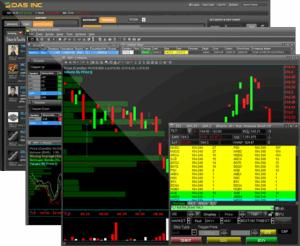Being part of a trading desk team demands a high level of understanding, quick decision-making ability and refined trading strategies. The financial market can often be unpredictable, with sudden fluctuations making it challenging for traders to consistently make profitable trades. This is where the concept of a trading simulator or back testing comes in handy. A trading simulator allows traders to test their strategies in real-time market scenarios without risking actual capital.

What is a Trading Simulator?
A trading simulator is essentially a software application that mimics the operations of the real financial market on your computer or device. It allows traders to practice and improve their trading skills by simulating real-time trade and market scenarios. The simulations encompass various trading tools, such as forex, stocks, futures, options, and cryptocurrencies. Users can trade on these platforms using virtual money, eliminating any financial risk while testing their trading strategies.
How to Use a Trading Simulator – For individuals and trading desks
Usage of trading simulators primarily involves a few steps – setting up the account, picking the preferred trading tool, implementing the strategy, and tracking performance. However, it’s important to note that each simulator may function slightly differently depending on its design.
- Setting up the Account: The first step involves signing up and setting up an account on the selected trading simulator platform. Many platforms offer free trials or even completely free versions, allowing traders to get a feel for the software before committing financially.
- Picking the Trading Tools: Once your account is ready, the next step involves choosing your desired trading tools. These could range from forex, stocks, futures, options to cryptocurrencies.
- Implementing the Strategy: The core function of the trading simulator is to provide a risk-free environment to implement and test your trading strategies. This includes setting up trades based on your chosen methods and then observing how they perform in the simulated market environment.
- Tracking Performance: Trading simulators often come with analytical tools that allow users to track their performance over time. This way, traders can identify weaknesses and areas for improvement in their strategies.
Why Use a Trading Simulator?
There are numerous advantages of employing a trading simulator in a trading desk environment. Here are a few:
- Risk Management: The most obvious benefit is the risk-free environment it provides. Traders can test multiple strategies without risking actual capital. They can make adjustments based on the outcomes, leading to refined trading methods and better risk mitigation.
- Performance Analysis: Most trading simulators offer in-built analytical tools which help traders analyze the performance of their strategies in detail. Trends, weak points, strong suits, all can be evaluated and worked upon.
- Learning Opportunity: For novice traders, simulators provide an exceptional learning platform. They get practical exposure to the workings of the financial market and can learn from their own trial and error.
- Real-Time Experience: Simulators mimic real-time market scenarios closely. They encompass factors like market fluctuations, volatility, liquidity, etc., providing a near-real experience of trading.
- Confidence Building: By testing strategies in real-time scenarios, traders not only develop their skills but also gain confidence in their decision-making abilities, which is invaluable in real-time trading scenarios.
Conclusion
In the volatile world of trading, where every decision can have significant financial implications, having a platform to test your strategies without real-world repercussions is invaluable. A trading simulator/back testing provides just that – a risk-free environment to experiment, learn and improve. Whether you're a part of a trading desk or trading individually, a trading simulator is an indispensable tool. It considerably manages potential losses, promotes learning, improves strategy, and fosters confidence – prerequisites for dynamic trading.
While simulators cannot foretell profitability, they certainly equip traders with better decision-making abilities and risk management. As such, every trading desk should incorporate the practice of using trading simulators into their trading regime – to test, learn, improve and excel.
Disclosure Statement No information provided by Velocity Clearing, LLC (“Velocity” or the “Firm”), directly or indirectly, should be considered a recommendation or solicitation to adopt any particular trading or investment strategy or to invest in, or liquidate, a particular security or type of security. Information provided by Velocity on its Twitter, Facebook or Blog pages is for informational and educational purposes only and is not intended as a recommendation of any particular security, transaction or strategy. Commentary and opinions expressed are those of the author/speaker and not necessarily those of the Firm. Velocity does not guarantee the accuracy of, or endorse, the statements of any third party, including guest speakers or authors of commentary or news articles. All information regarding the likelihood of potential future investment outcomes are hypothetical. Future results are never guaranteed. Any examples that discuss potential trading profits or losses may not take into account trading commissions or fees, which means that potential profits could be lower and potential losses could be greater than illustrated in any example. Users are solely responsible for making their own, independent decisions about whether to use any of the research, tools or information provided, and for determining their own trading and investment strategies.

